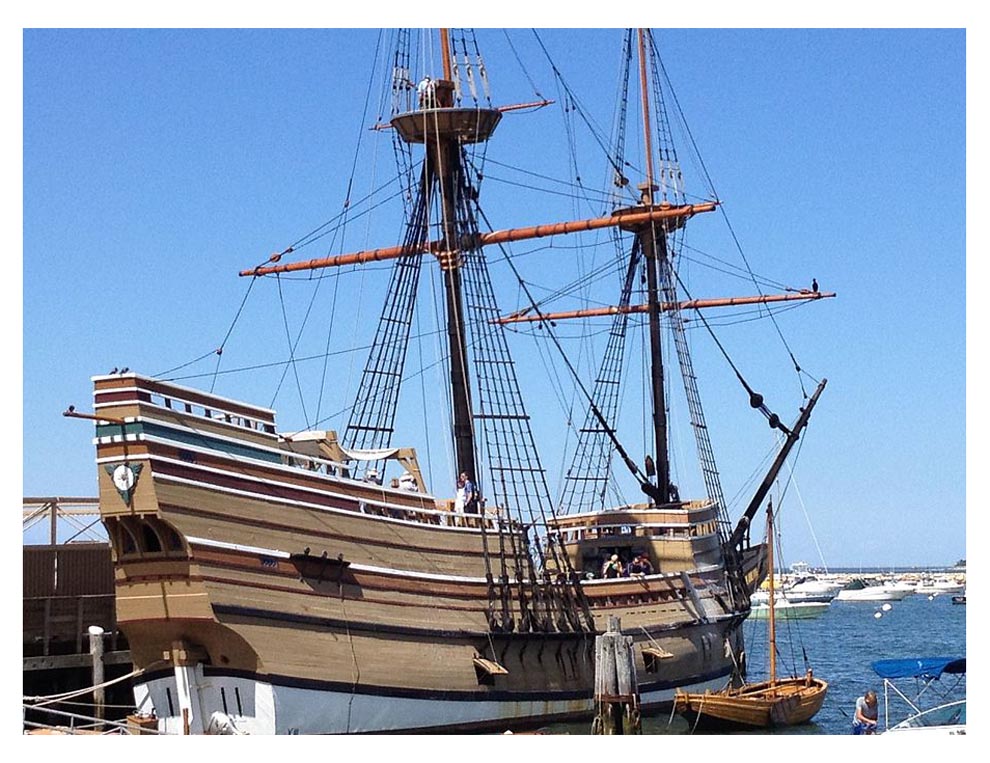
“Memory is the scribe of the soul.” —Aristotle
Salt water, storms, and headwinds, leaky decks and the November winds coming in did not deter the 102 passengers on the Mayflower in 1620. The thin-walled cabins below deck overflowed with chests of clothing, “casks of food, chairs, pillows, and rugs. A boat had been cut into pieces for later assembly and used as a temporary bed,” according to one report

This group of colonists were mostly families willing to endure almost anything because it meant they could worship as they pleased. Among them were four pregnant women, weavers, wool carders, tailors, shoemakers, printers, and farmers.
The Mayflower was a typical merchant vessel of the day with square rigging and approximately 100 feet in length. Christopher Jones was its commanding officer. He had been Mayflower master for 11 years taking English woolens to France and returning to London with French wines. Jones had transported hats, hemp, Spanish salt, and vinegar to Norway.
The Pilgrims were at sea 10 weeks and dropped anchor near the tip of Cape Cod November 11, 1620. They considered America a new Promised Land where they would establish Plymouth Colony. Only half of the original Pilgrims survived the first harsh Winter. Local indigenous peoples taught them food-gathering and other survival skills.
The following year 53 individuals had survived and celebrated the colony’s first Fall harvest along with 90 Wampanoag Native American people. This occasion was declared centuries later as the first American Thanksgiving.
Prior to disembarking the ship, the Pilgrims wrote and signed the Mayflower Compact, an agreement that established a rudimentary government. In accordance with the cultural and legal norms of that time, no women signed the document.
And so it was with clear skies and light winds, the Mayflower saw land. Seagulls began to appear in the sky and the color of the water changed from deep blue to pale green. The passengers were “not a little joyful,” according to one report. The Pilgrims were “much comforted by seeing so goodly a land and wooded to the brink of the sea.” The passengers crowded the sun-drenched deck “to drink in their first view of the New World.”
Ahead of them was the unknown wilderness. Fear presented itself. The scene was absolute quiet. The Town Brook gurgled, the lap of waves against the shore and the wind in the bare Winter branches were almost silent. The Pilgrims listened and waited.
The first building, a common house, was completed in two weeks. The walls were hewn tree trunks interwoven with branches and twigs that were cemented together with clay. Its thatched roof was made of cattails and reeds from the nearby marsh.
By 1623 the Pilgrims had goats, pigs and chickens. Soon to follow were more cattle and some horses. Because now they could grow their own food and keep it, and so the Pilgrims had stumbled on the power of capitalism.
Their descendants in 2002 were estimated to be 35 million from the Mayflower passengers living in the United States. This total represents roughly 10% of the total U.S. population.
Those ancestors were: Strong. Resolute. Courageous. Determined.

